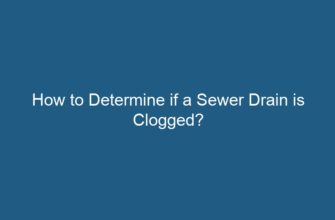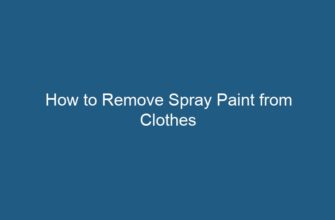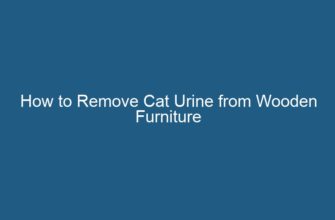When it comes to choosing the right materials for flat roofs, there are several factors to consider. Flat roofs have unique requirements, such as the need for proper drainage and resistance to water pooling. Additionally, the materials must be able to withstand the elements and provide long-lasting protection. In this article, we will discuss some of the best materials for flat roofs, their characteristics, advantages, and disadvantages.
1. Built-Up Roofing (BUR)
Built-up roofing, also known as BUR, is a traditional and widely used material for flat roofs. It is composed of multiple layers of asphalt and reinforced with fiberglass or organic felts. BUR offers several advantages:
- Durability: BUR is known for its long lifespan, often lasting 20-30 years.
- Waterproofing: The multiple layers of asphalt provide excellent waterproofing capabilities.
- Fire resistance: BUR has a high fire resistance rating, making it a safe choice.
However, there are some drawbacks to consider:
- Weight: BUR is heavy, which may require additional structural support.
- Installation: It requires skilled labor and can be time-consuming.
- Maintenance: Regular maintenance is necessary to prevent leaks and prolong its lifespan.
2. Modified Bitumen Roofing
Modified bitumen roofing is another popular choice for flat roofs. It is made from asphalt and modified with rubber or plastic polymers. Modified bitumen offers the following benefits:
- Flexibility: It can adapt to temperature changes and movements without cracking.
- Easy installation: Modified bitumen can be installed using various methods, including heat welding and cold adhesives.
- UV resistance: It has good resistance to UV rays, preventing premature deterioration.
However, there are a few disadvantages:
- Cost: Modified bitumen roofing can be more expensive than other options.
- Repair complexity: Repairs may require professional assistance and specialized tools.
3. EPDM Roofing
EPDM (Ethylene Propylene Diene Monomer) roofing is a synthetic rubber material commonly used for flat roofs. Its advantages include:
- Durability: EPDM can last up to 50 years with proper maintenance.
- Resistance to weathering: It can withstand extreme temperatures, UV radiation, and ozone exposure.
- Easy installation: EPDM can be installed with adhesives, mechanically fastened, or ballasted.
However, there are a few drawbacks:
- Seam vulnerability: If not properly sealed, seams can become vulnerable to leaks.
- Environmental impact: EPDM is not as environmentally friendly as some other options.
4. PVC Roofing
PVC (Polyvinyl Chloride) roofing is a single-ply membrane that offers several advantages for flat roofs:
- Energy efficiency: PVC roofs have high solar reflectivity, reducing cooling costs.
- Durability: They have a long lifespan and can withstand harsh weather conditions.
- Chemical resistance: PVC is resistant to chemicals, making it suitable for industrial applications.
However, there are a few considerations:
- Cost: PVC roofing can be more expensive than other options.
- Installation expertise: Professional installation is recommended to ensure proper welding and sealing.
- Environmental concerns: Some PVC formulations may have environmental implications.
5. TPO Roofing
TPO (Thermoplastic Olefin) roofing is a single-ply membrane that has gained popularity for flat roofs. Its advantages include:
- Energy efficiency: TPO roofs have high reflectivity and emissivity, reducing energy consumption.
- Flexibility: They can accommodate building movements and temperature fluctuations.
- Resistance to chemicals: TPO is resistant to chemical exposure and pollutants.
However, there are a few considerations:
- Quality variation: Not all TPO membranes are created equal, so it’s important to choose a reputable manufacturer.
- Installation challenges: TPO requires proper welding and sealing techniques for optimal performance.
6. Green Roofing
Green roofing, also known as a living roof or vegetative roof, is a unique and environmentally friendly option for flat roofs. It involves the installation of vegetation and a waterproofing membrane. Benefits of green roofing include:
- Insulation: Green roofs provide additional insulation, reducing energy consumption.
- Stormwater management: They can absorb and retain rainwater, reducing runoff and strain on drainage systems.
- Aesthetics: Green roofs add beauty and can create a habitat for wildlife.
However, there are a few considerations:
- Weight: Green roofs are heavier and may require additional structural support.
- Maintenance: Regular maintenance is necessary to ensure the health and longevity of the vegetation.
- Cost: Green roofs can be more expensive to install and maintain.
7. Metal Roofing
Metal roofing is a durable and long-lasting option for flat roofs. It offers the following advantages:
- Longevity: Metal roofs can last 40-70 years with proper maintenance.
- Fire resistance: They have a high fire resistance rating.
- Energy efficiency: Metal roofs can reflect solar heat, reducing cooling costs.
However, there are a few considerations:
- Cost: Metal roofing can be more expensive upfront.
- Noise: Without proper insulation, metal roofs can be noisy during rain or hailstorms.
- Expansion and contraction: Metal roofs expand and contract with temperature changes, requiring proper installation techniques.
8. Fiberglass Roofing
Fiberglass roofing is a lightweight and durable option for flat roofs. Its advantages include:
- Strength: Fiberglass roofs are resistant to cracking and tearing.
- UV resistance: They can withstand prolonged exposure to UV rays without significant degradation.
- Fire resistance: Fiberglass has a high fire resistance rating.
However, there are a few considerations:
- Cost: Fiberglass roofing can be more expensive than other options.
- Installation expertise: Professional installation is recommended for optimal performance.
- Maintenance: Regular inspection and maintenance are necessary to prevent damage.
9. Asphalt Roll Roofing
Asphalt roll roofing is an affordable and easy-to-install option for flat roofs. Its advantages include:
- Affordability: Asphalt roll roofing is one of the most cost-effective options.
- Easy installation: It can be installed by overlapping and nailing the rolls.
- UV resistance: Some asphalt roll roofing products have UV-resistant coatings.
However, there are a few considerations:
- Shorter lifespan: Asphalt roll roofing typically lasts 10-15 years.
- Vulnerability to weathering: It may deteriorate more quickly under harsh weather conditions.
- Appearance: Asphalt roll roofing may not have the aesthetic appeal of other materials.
10. Spray Polyurethane Foam (SPF) Roofing
Spray Polyurethane Foam (SPF) roofing is a unique option that provides excellent insulation and waterproofing. Its advantages include:
- Seamless installation: SPF roofing forms a monolithic, seamless surface.
- Energy efficiency: It provides superior insulation, reducing heating and cooling costs.
- Durability: SPF roofs can last 30-50 years with proper maintenance.
However, there are a few considerations:
- Installation expertise: SPF roofing requires professional installation and specialized equipment.
- UV protection: A topcoat or reflective coating is necessary to protect the foam from UV radiation.
- Maintenance: Regular inspections and recoating are necessary to maintain its performance.
FAQs










